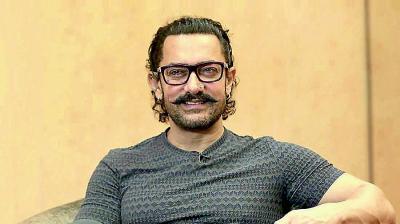Making the cut
Krishna Shastri Devulapalli refuses to call himself an author. “I am still trying to be one,” insists this writer, who has, in the past, been a cartoonist, graphic designer, a writer of greeting cards, an ad professional and a children’s book author.
Krishna Shastri Devulapalli refuses to call himself an author. “I am still trying to be one,” insists this writer, who has, in the past, been a cartoonist, graphic designer, a writer of greeting cards, an ad professional and a children’s book author. His first novel, Ice Boys in Bell Bottoms, set in the Madras of the 1970’s, is a nostalgic, coming-of-age tale of a young boy who grows up in Chennai. The book was well received and Krishna is now back with Jump Cut, the story of a protagonist named Satyajit Ray, set against the backdrop of the Tamil film industry. A touching tale of a father-son relationship, the book also explores the dark underbelly of Tamil films and is also a story of friendship, love and betrayal, and more importantly, the bittersweet nature of homecoming. Coming from a family of artists and creatively charged people is what inspired Krishna to get into writing full time. “I grew up in an atmosphere that was ideal for the pursuit of any creative profession. My family was quirky, to say the least. Their own exploits are enough for three or four books,” says the author, who admits that Ice Boys in Bell Bottoms was ‘semi-autobiographical’. However, this time around, the writer has stuck to fiction. “After Ice Boys in Bell Bottoms, I wanted to write something where I relied on my imagination. I’ve always been fascinated with the film world. That, and an abiding interest in the father-son relationship, were the reasons I wrote the book. No single person or event as such inspired me,” he says. Jump Cut traces the journey of Ray, who is named after the legendary director, thanks to his father’s lifetime obsession with cinema. Ask him about the unconventional choice of the name Satyajit Ray in a book that is set in the backdrop of Tamil cinema, and he says, “Firstly, my book is not about Tamil cinema per se. It happens to have the cine world as a backdrop. As for the name, like any film lover, I’m a huge fan of Satyajit Ray. The character of the father in the book is a genuine film buff as well. He loves all cinema, not just Tamil cinema. I thought ‘Satyajit Ray’ (arguably India’s greatest filmmaker) would be the obvious name he’d give his son. Hence, the protagonist becomes Ray.” Talking about the characterisation of the protagonist, Krishna insists that it is not based on him at all. “He was the teacher’s pet, a first class, IIT topper, Masters at Stanford, software professional. I barely made it through school and college. But, like Ray, I too know what it is to lose a parent early. There is that essential similarity.” Set in Chennai, the book is peppered with a generous dose of the local language — the famous Chennai slang, which was interestingly, and perhaps deliberately, not translated into English. While we suggested that it could restrict the ‘global’ appeal of the book, Krishna argues otherwise. “Why is it that we are okay with Hindi words being used liberally in pan-Indian books and ads but not any other language Aren’t we forced to understand phrases like Yeh Dil Maange More or Love you Hamesha. So, why not Telugu, Tamil or Malayalam I think a skilled writer can use words and phrases from a language unfamiliar to readers and still manage to convey the meaning. The Nigerian writer Chinua Achebe was a past master at it.” The writer also shares a special love for Chennai and Tamil cinema. Talking about choosing Kollywood as the theme, he says, “It could just as easily have been set in the IT industry in Bengaluru or in the world of big business in Mumbai. But, as I said, I love the movies and I know and love Chennai.” Ask him about the importance of having humour and/or satire in his novels and Krishna says, “Humour is essential to all art. Whether it is a painting, a movie or a poem, the masters always manage to bring in a bit of humour — even if the central theme is grave. Humour and satire are good ways to make serious issues accessible to people. You laugh at the beginning, and maybe you go home and think a bit too. I hope my books achieve this,” he concludes.


















